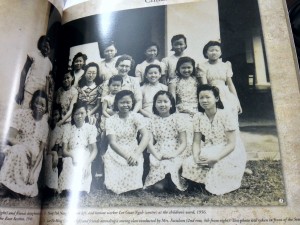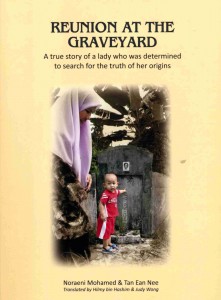21 Feb 2016: The Valley of Hope February 25, 2016 – Posted in: Newsletters
The history of the Sungai Buloh leprosy settlement has been vividly captured in a series of books and videos produced by a team of researchers. Featuring many old photographs, brief histories, family reunions and stories of former patients who were forcefully isolated due to their affliction. These journeys from hopelessness and despair to healing and happiness are nothing short of moving.
 There is little doubt that stories of human interest generate much attention, whatever the mood of the moment. Such stories share a common trait – life’s vicissitudes – even when the different stories take many forms. Human interest stories can also be likened to provocative shots of reality in an otherwise idealistic and idyll existence. They can be about ordinary people, achievements or compassion – this week’s featured titles focuses on the latter.
There is little doubt that stories of human interest generate much attention, whatever the mood of the moment. Such stories share a common trait – life’s vicissitudes – even when the different stories take many forms. Human interest stories can also be likened to provocative shots of reality in an otherwise idealistic and idyll existence. They can be about ordinary people, achievements or compassion – this week’s featured titles focuses on the latter.
During the British colonisation of Malaya, leprosy patients were forcibly quarantined in an area away from the community as there was no cure. They were forbidden access to public transportation, public facilities and hotels. Most tragically, parents with leprosy were separated from their children, who were placed in child care centres within the settlement. These babies were cared for by nurses until they were six months old. After that, they were handed over to other family members, charitable organisations or were adopted. The name given to this leprosarium was Sungai Buloh, once considered the biggest and most modern among its kind in the Commonwealth countries.
In 2009, Tan Ean Nee, leader of the Sungai Buloh Oral History team, together with a friend, Joshua Wong, published a book about the stories of former leprosy patients and their descendants entitled The Way Home in 2009. The series was successful in opening the minds of the society towards difficulties faced by former leprosy patients. Many ex-residents of the Sungai Buloh settlement have contacted Tan to express their intention to locate their heirs. Unfortunately, they faced difficulties as the foster homes of the adopted children often concealed the identity of the biological parents.
Reunion at the Graveyard documents the experience of Noraeni Mohamed, who, as a child, was separated from her parents at the settlement. Her plight was highlighted by a Chinese newspaper, which featured her desire to be reunited with her biological parents. Noraeni is of Chinese descent and has a sister who was also given to an adoptive family. Her inspiring story is also featured in a 26-minute DVD (in Malay with Chinese, English and Malay subtitles) entitled Anak-anak Sungai Buloh.
documents the experience of Noraeni Mohamed, who, as a child, was separated from her parents at the settlement. Her plight was highlighted by a Chinese newspaper, which featured her desire to be reunited with her biological parents. Noraeni is of Chinese descent and has a sister who was also given to an adoptive family. Her inspiring story is also featured in a 26-minute DVD (in Malay with Chinese, English and Malay subtitles) entitled Anak-anak Sungai Buloh.
A longer documentary, Descendants of the Wind(multilingual with Chinese, English and Malay subtitles), narrates the tragedy of forced separation between numerous persons affected with leprosy and their family. What was their fate after that? Where did they go to? When these children grow up, will they be able to reunite with their biological parents and compensate for the time lost?
 The history of the Sungai Buloh leprosy settlement has been vividly captured in a pictorial book called Valley of Hope. Compiled by the oral history team of The Way Home, the book contains many old photographs accompanied by brief descriptions and stories of former patients who were isolated from society due to their affliction. These journeys from hopelessness and despair to healing and happiness are nothing short of moving and inspirational, and brings to mind a passage inspired by the doyen of sci-fi Arthur C. Clarke: Mourn not for us, for we have known the light, have looked on beauty, have lived in peace and loved. Grieve but for those who go alone, unwise, to die in darkness, and never see the sun.
The history of the Sungai Buloh leprosy settlement has been vividly captured in a pictorial book called Valley of Hope. Compiled by the oral history team of The Way Home, the book contains many old photographs accompanied by brief descriptions and stories of former patients who were isolated from society due to their affliction. These journeys from hopelessness and despair to healing and happiness are nothing short of moving and inspirational, and brings to mind a passage inspired by the doyen of sci-fi Arthur C. Clarke: Mourn not for us, for we have known the light, have looked on beauty, have lived in peace and loved. Grieve but for those who go alone, unwise, to die in darkness, and never see the sun.
About the author: Tan Ean Nee is a mass communication graduate from Universiti Sains Malaysia and has been active in the visual media industry. She is the founder of Care & Share Circle as well as a freelance writer. Ean Nee is active in charity work to re-establish family ties of former leprosy patients and their descendants.
